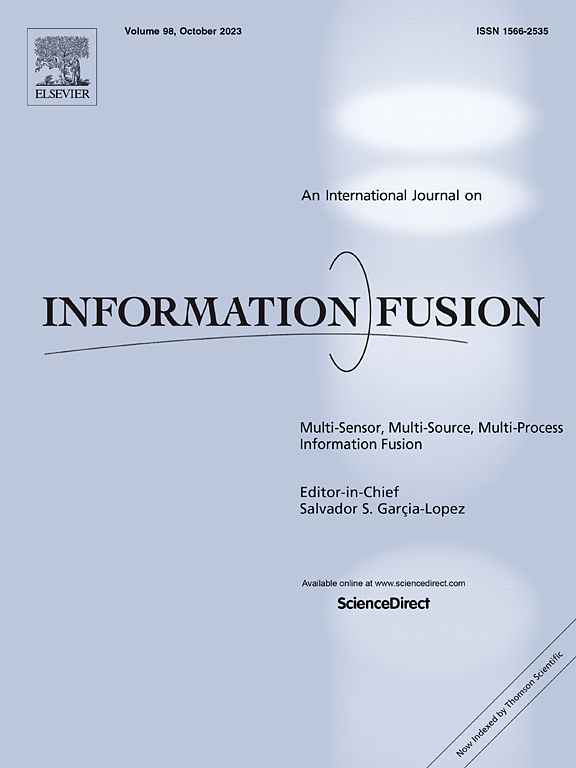SNAFusion-MM: Distilling sparse sampled measurements by 2D axial diffusion priors with multi-step matching for 3D inverse problem
IF 14.7
1区 计算机科学
Q1 COMPUTER SCIENCE, ARTIFICIAL INTELLIGENCE
引用次数: 0
Abstract
Reconstructing 3D volumes with inner details from sparse measurements remains a critical challenge in Computed Tomography (CT) and Magnetic Resonance Imaging (MRI). Existing data-driven 3D decoders suffer from limited generalizability and recent diffusion models most remain restricted to 2D domains due to prohibitive memory demands that hinder 3D utilization. Although implicit neural rendering (INR)s develop 3D representations, they frequently struggle to maintain reconstruction fidelity under extremely sparse view conditions. We propose SNAFusion-MM,a framework that unifies 2D axial diffusion priors, geometric constraint from physical operators, and multi-step distillation strategy for Sparse measured 3D medical reconstruction. Unlike conventional score distillation sampling, ourframework distills robust prior knowledge from pre-trained 2D prior within deterministic DDIM trajectories and incorporates plug-and-play geometric information related to the measured process to refine the global coherent 3Dneural radiance field, eliminating the over-smoothing artifacts of single-step SDS while preserving 3D consistency and anatomical details. We conducted experiments on challenging in-/out-of-distribution datasets under a single GPU without any retraining. Quantitative and qualitative assessments demonstrate that SNAFusion-MM outperforms the recent works and also exhibit its superior generalizability, especially including extremely sparse-view cone-beam CT (CBCT), X-ray novel-view synthesis (NVS) from sparse sampled CBCT, and radial sampled compressed sensing MRI (CS-MRI) tasks, which cannot yet be well handled by state-of-the-art (SOTA)s.
snafusin - mm:利用二维轴向扩散先验提取稀疏采样测量值,并进行多步匹配,用于三维反问题
从稀疏测量中重建具有内部细节的三维体仍然是计算机断层扫描(CT)和磁共振成像(MRI)的关键挑战。现有的数据驱动的3D解码器受限于有限的通用性和最近的扩散模型,由于令人望而却步的内存需求,阻碍了3D的利用,大多数仍然局限于2D域。虽然隐式神经渲染(INR)开发了3D表示,但它们经常难以在极其稀疏的视图条件下保持重建保真度。我们提出了snafusin - mm,这是一个将二维轴向扩散先验、物理算子的几何约束和多步蒸馏策略统一起来的框架,用于稀疏测量的三维医疗重建。与传统的分数蒸馏采样不同,我们的框架在确定性DDIM轨迹中从预训练的2D先验中提取稳健的先验知识,并结合与测量过程相关的即插即用几何信息,以细化全局相干3D神经辐射场,消除单步SDS的过度平滑工件,同时保持3D一致性和解剖细节。我们在没有任何再训练的情况下,在单个GPU下对挑战分布内/分布外数据集进行了实验。定量和定性评估表明,snafusin - mm优于最近的研究成果,并展示了其优越的通用性,特别是包括极稀疏视图锥束CT (CBCT),稀疏采样CBCT的x射线新视图合成(NVS),以及径向采样压缩感知MRI (CS-MRI)任务,这些任务尚不能由最先进的(SOTA)处理。
本文章由计算机程序翻译,如有差异,请以英文原文为准。
求助全文
约1分钟内获得全文
求助全文
来源期刊

Information Fusion
工程技术-计算机:理论方法
CiteScore
33.20
自引率
4.30%
发文量
161
审稿时长
7.9 months
期刊介绍:
Information Fusion serves as a central platform for showcasing advancements in multi-sensor, multi-source, multi-process information fusion, fostering collaboration among diverse disciplines driving its progress. It is the leading outlet for sharing research and development in this field, focusing on architectures, algorithms, and applications. Papers dealing with fundamental theoretical analyses as well as those demonstrating their application to real-world problems will be welcome.
 求助内容:
求助内容: 应助结果提醒方式:
应助结果提醒方式:


